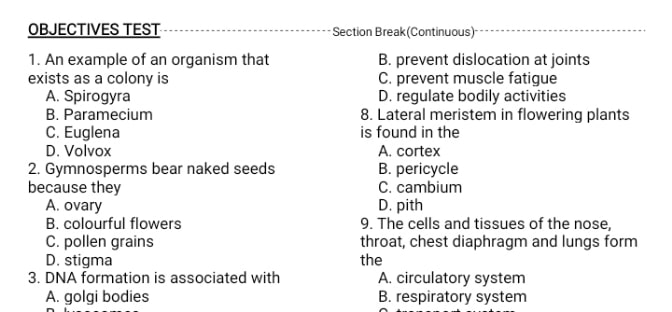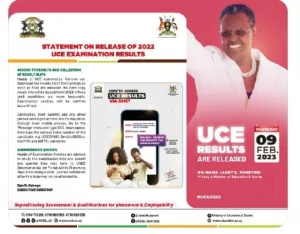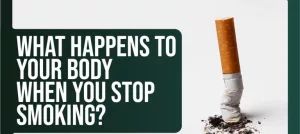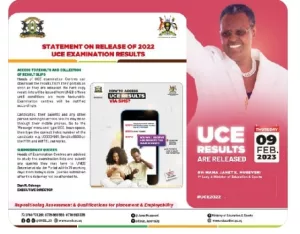WASSCE biology mock questions

WASSCE biology mock questions
WASSCE biology mock questions
This is a standard WASSCE biology mock questions. The questions are designed to enable candidates to pass their examination successfully.
See also: WASSCE chemistry mock questions
OBJECTIVES TEST
1. An example of an organism that exists as a colony is
A. Spirogyra
B. Paramecium
C. Euglena
D. Volvox
2. Gymnosperms bear naked seeds because they
A. ovary
B. colourful flowers
C. pollen grains
D. stigma
3. DNA formation is associated with
A. golgi bodies
B. lysosomes
C. mitochondria
D. nucleus.
4. Hydra is considered to be at a tissue level of organization of life because it
A. has numerous cells that perform different functions
B. has developed organs and systems
C. has poorly developed nervous system
D. reproduces by budding.
5. Flaccidity in plants is associated with
A. cessation of photosynthesis
B. wilting
C. turgidity
D. discolouration of leaves
WASSCE biology mock questions
6. Which of the following substances is not usually present in the urine of healthy person?
A. Urea
B. Mineral salts
C. Glucose
D. Water
7. Muscles act in opposite directions in order to
A. cause a bone to move
B. prevent dislocation at joints
C. prevent muscle fatigue
D. regulate bodily activities
8. Lateral meristem in flowering plants is found in the
A. cortex
B. pericycle
C. cambium
D. pith
9. The cells and tissues of the nose, throat, chest diaphragm and lungs form the
A. circulatory system
B. respiratory system
C. transport system
D. digestive system
10. The exchange of gases between the environment and the respiratory organs of vertebrates is referred to as
A. inhalation
B. respiration
C. expiration
D. breathing
WASSCE biology mock questions
11. Muscles act in opposite directions in order to
A. cause a bone to move
B. prevent dislocation at joints
C. prevent muscle fatigue
D. regulate bodily activities
12. Lateral meristem in flowering plants is found in the
A. cortex
B. pericycle
C. cambium
D. pith
13. The cells and tissues of the nose, throat, chest diaphragm and lungs form the
A. circulatory system
B. respiratory system
C. transport system
D. digestive system
14. The exchange of gases between the environment and the respiratory organs of vertebrates is referred to as
A. inhalation
B. respiration
C. expiration
D. breathing
15. The maintenance of a constant internal environment in an organism is known as
A. homeostasis
B. homoiothermy
C. diuresis
D. dialysis
WASSCE biology mock questions
16. Which of the following organs is responsible for the production of insulin?
A. Spleen
B. Adrenal gland
C. Thyroid gland
D. Pancreas
17. Which of the following actions is not a voluntary action?
A. Stealing
B. Sneezing
C. Fighting
D. Cheating
18. In both dicotyledonous and monocotyledonous plants, the root hairs originate from the
A. piliferous layer
B. epidermal layer
C. endodermal layer
D. cortical layer
19. Which of the following parts of the ear does not contain endolymph?
A. Semi-circular canals
B. Utriculus
C. Tympanum
D. Sacculus
20. The type of placentation illustrated in the diagram below i
A. marginal
B. parietal
C. axile
D. basal
WASSCE biology mock questions
The steps below are involved in the testing of a leaf for starch. Study them carefully and answer questions 21 and 22.
I. Decolorize leaf
II. Dip decolorized leaf in warm water
III. Place leaf in boiling water
IV. Add iodine solution
21. The correct order for the test is
A. I, II, III and IV
B. I, III, II and IV
C. II, III, I and IV
D. III, I, II, and IV
22. The best time to pluck the leaf for the experiment is
A. after being exposed to sunlight
B. three hours after sunset
C. before sunrise
D. six hours after sunset
23. In which of the plant tissues are guard cells located?
A. Epidermis
B. Mesophyll
C. Vascular
D. Meristems
24. The association between two organisms in which one of the organism gains and the other loses is referred to as
A. saprophytism
B. commensalism
C. mutualism
D. parasitism
25. The function of the villi in the alimentary canal is to
A. secrete gastric juice
B. curdle milk
C. emulsify fat
D. increase the surface area for absorption
WASSCE biology mock questions
26. Which of the structures is not an organ of the digestive system
A. Oesophagus
B. Pancreas
C. Stomach
D. Kidney
27. In ecology, a community refers to
A. a number of individuals of a given species
B. groups of different living in a habitat
C. existing species in an abandoned farmland
D. the dominant species in the habitat
28. Direction of wind is determined by
A. an anemometer
B. a Secchi disc
C. a wind vane
D. a barometer
29. Food webs are complex because
A. the number of producers are large
B. many animals feed directly on producers
C. they include primary, secondary and tertiary consumers
D. some animals form part of several food chains
30. Special modifications which enable an organism to survive in its habitat is known as
A. adaptation
B. tolerance
C. mimicry
D. colouration
WASSCE biology mock questions
31. Which of the following relationships does not involve two organism?
A. Commensalism
B. Saprophitism
C. Symbiotism
D. Parasitism
32. Overcrowding in a population does not result in
A. death
B. commensalism
C. competition
D. migration
33. A pandemic is an outbreak of diseases that
A. is confined to a town
B. is widespread
C. will not spread
D. has limited spread
34. The rational and prudent use of natural resources is known as
A. preservation
B. conservation
C. utilization
D. management
35. Which of the following natural resources cannot be conserved?
A. Soil
B. Water
C. Wildlife
D. Air
WASSCE biology mock questions
36. Which of the following actions supports conservation? To
A. protect endangered species
B. preserve trees for timber
C. permit hunting activities
D. provide income for the government
37. A noticeable physical appearance of individuals of the same species is called
A. physical variation
B. physiological variation
C. morphological variation
D. discontinuous variation
38. A blend of inherited and acquired characteristics shows
A. variation
B. inheritance
C. evolution
D. heredity
39. Scientists who study genetics are known as
A. genealogists
B. geneticists
C. mendelists
D. genescientists
40. Which of the following scientists did not contribute to the development of genetics?
A. Wilhem Johnson
B. Thomas Morgan
C. Gregor Mendel
D. Felix Durjadin
WASSCE biology mock questions
41. In which of the following insects is group instinct not displayed?
A. Soldier ants
B. Cockroaches
C. Honeybees
D. Termites
42. The inability of an organism to adapt to its habitat can lead to
A. dormancy
B. adaptation
C. extinction
D. survival
43. Which of the following organisms is not a protozoan?
A. amoeba
B. ascaris
C. plasmodium
D. paramecium
44. The structure of the cell membrane is a
A. double layer and a double protein layer
B. middle bi-layer of protein with a lipid layer on either surface
C. middle bi-layer of lipid with a protein layer on either surface
D. protein layer with two inner lipid layers
45. Which of the following cells is a specialized cell?
A. amoeba
B. plasmodium
C. guard cell
D. meristematic cell
WASSCE biology mock questions
46. The following organisms have structures for movement except
A. amoeba
B. spirogyra
C. volvox
D. paramecium
47. Which of the following statements about the protoplasm of a cell is not correct? It
A. is a gelatinous mass
B. consists of cytoplasm and nucleus
C. is the liquid part of the nucleus
D. contains cellular organelles
48. When a spirogyra filament is placed in a concentrated salt solution for 30 minutes, the cell would become
A. plasmolysed
B. turgid
C. shortened
D. enlongated.
49. Which of the following processes removes carbon (IV) oxide from the atmosphere?
A. Burning fuels
B. Putrefaction
C. Photosynthesis
D. Respiration in Plants
50. Which of the following organs of the alimentary canal is not correctly matched with its function?
A. Gall bladder – stores bile.
B. Liver – stores glycogen.
C. Appendix – releases enzymes.
D. Teeth – grind food.
PAPER 2 ESSAY TEST: Answer FOUR questions from this section.
1. (a) (i) What is classification of living things? (2marks)
(ii) Name the scientist that developed the Binomial System of Classification (2marks)
(iii) State three reasons why it is necessary to classify living things. (3marks).
(iv) List seven major groups into which taxonomists classify living things in order of
hierarchy
(7marks).
(b) state two features each which viruses have in common with: (4marks).
(i) living things
(ii) non-living things.
(c) Name two viral diseases each of: (4marks).
(i) plants
(ii) humans
d. state three ways to prevent viral diseases in humans. (3marks).
WASSCE biology mock questions
2. (a) State four characteristics of enzymes. (4marks).
(b) (i) List two digestive enzymes produced in the duodenum of humans (2marks).
(ii) Name the substrate that each enzyme listed in 2(b)(i) acts on. (2marks).
(iii) State the products of each enzyme activity in 2(b)(ii) (2marks).
(c) (i) State one way in which chlorophyll is important in plants (1mark)
(ii) Name two microelements that are required for the formation of chlorophyll in plants. (2marks)
(iii) State one deficiency symptom of each macro element named in 2 (c) (ii) above (2marks)
(d) Outline the procedure used for testing for starch in a leaf. (5marks)
(e) make a drawing of a leaf of dimension 8cm long and label fully (5marks)
WASSCE biology mock questions
3. (a) Name one instrument used for collecting:
(i) soil organism from a soil sample. (1mark)
(ii) tiny insects from a leaf or a stem. (1mark)
(b) make a diagram 6 cm – 8 cm long of the instrument named in (a)(ii) above and label fully. (10marks).
(c). (i) What is pollution? (2marks)
(ii) State three effects of air pollution on living things. (3marks)
(iii) State four ways of controlling air pollution. (4marks)
(d) Copy and complete the table below.
One Air Pollutant One Source
i
ii
iii
WASSCE biology mock questions
4. a. State five:
(i) causes of variation in living things; (5marks)
(ii) consequences of variation to living things. (5marks).
b. Copy and complete the table below on castes in a termite colony and state one role of each
caste. (6marks).
Caste in a termite colony One role of caste in the colony
(i)
ii
iii
iv
c. what are social insects (2marks).
(i) give two examples of social insects. (2marks)
(ii) write down five adaptive features of the cockroach. (5marks).
WASSCE biology mock questions
5. (a) Explain briefly the following terms: (6marks)
i) health;
ii) hygiene;
iii) sanitation.
b. Distinguish between:
i) bilateral symmetry and radial symmetry; (4marks)
ii) longitudinal section and transverse section. (4marks)
c. A student drew a rabbit which is five times larger than the drawing. If the drawing is 8 cm
long, calculate:
i) the actual length of the rabbit: (2marks)
ii) the magnification of the drawing. (2marks)
d.(i) list four precautions that should be taken when using the light microscope (4marks).
(ii) list three important parameters to consider in a biological drawing. (3marks).
Post Disclaimer
The information contained in this post is for general information purposes only. The information is provided by Educative News and while we endeavour to keep the information up to date and correct, we make no representations or warranties of any kind, express or implied, about the completeness, accuracy, reliability, suitability or availability with respect to the website or the information, products, services, or related graphics contained on the post for any purpose.








